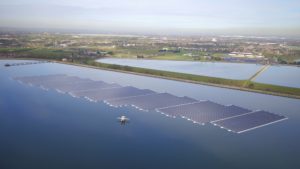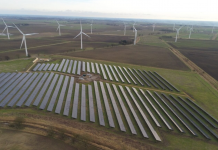Alongside battery storage that helps tackle the intermittency of solar and wind power generation, and more sophisticated networks that can deal with different levels of demand and supply, corporate power purchase agreements (PPAs) are seen as a key enabler of investment in renewables. And PPAs were in the spotlight during the “Procuring power for net zero” webinar held by The Energyst.
In the UK, both the political landscape and consumer pressure are pushing for net-zero carbon. With the additional benefit of science-based targets that deliver a roadmap on how to get there, according to Scottish Power’s Taylor McKenzie. “Adapting to how consumers behave is essential,” he adds. “Look at telecoms: only a decade ago everybody had a landline. Now everybody wants broadband, and landlines are practically obsolete.”
For McKenzie, concerted action is called for: “We need to both buy the green energy that is already in the market, and push for new green energy sites to be built”.
He is fully behind the use of corporate PPAs as a key tool in decarbonising the UK grid. “Because they tend to be 10+ years,” he says, “they provide a route to market for the power but also price certainty for the customer. They are a real driver of new renewable capacity.”
Scottish Power offers PPAs as a direct relationship with a whole generation site — normally for the larger corporates — or under the so-called aggregation model, where smaller customers can still access PPAs without being linked to a specific site.
Because a fixed baseload can be included as part of a PPA, the generation risk can rest with Scottish Power. PPAs can also be structured to match a customer’s demand profile.
For Zosia Riesner, director of power markets, at solar developer LightsourceBP, corporate PPAs are very much a core part of her company’s strategy.

PPAs were largely confined to the US market until fairly recently, especially because the presence of subsidies for renewable energy in the UK and mainland Europe meant that projects could be financed without PPAs. “But recently we have seen several corporates committing to 100% renewables,” Riesner says, “and as some industry leaders have seen PPAs working well, others have followed.”
PPAs are suitable for different types of buyers, according to Riesner. US tech companies led the way, but more recently a whole range of organisations including universities, transport firms and local authorities have shown an interest, she says.
Physical PPAs that see the power going through the grid from the renewable energy facility to the buyer’s business site are not the only contracts on offer. An alternative model is a virtual PPA with a Contracts for Difference (CfD) arrangement, whereby there is physical delivery of guarantees of origin, not actual power, Riesner explains.
“There is no one-size-fits-all approach. Different arrangements need to be looked at in different circumstances,” she says. “From private-wire PPAs to corporate PPAs on a new asset, or corporate PPAs on existing assets, and through to green tariffs or certificates of origin, the right solution sits there somewhere, with a time span ranging from two to 25 years.”
For the buyer, a PPA allows to manage price risk, secure a long-term reliable source of renewable energy and underpin additional carbon generation. For the seller, it is a bankable offtake, a source of long-term revenue that enables project financing by replacing subsidies with corporate demand.
Riesner reflects on the extraordinary year that 2020 has been, including for corporate PPAs. When electricity prices tumbled earlier in the year, generators struggled to attract prices that would allow them to finance projects. But she says her company has seen an increase in demand for corporate PPAs both in the UK and abroad.
“As we come to the end of 2020, I’m very optimistic on the opportunities for the corporate PPA market both for buyers and developers over the coming years,” she says.
A crucial development is to make PPAs simpler, Riesner believes. “We want PPAs to be bespoke to some extent, but we also want to reduce the legal costs associated with them through some element of standardisation.”
Alternative pricing strategies can help manage some of the risks and fluctuations. And so can crossborder PPAs, for example by bringing together solar generation in southern Europe with wind in the north. This kind of mixed, crossborder approach is gaining popularity with multinational corporates, she says.
Energy consumption must not be forgotten
But effective procurement should not be the only route to a zero-carbon system, according to Ian Byrne Energy Carbon Consultancy Services (IBECCS). Reducing demand and managing energy systems better, alongside energy trading, are all important elements, says Byrne.
In order to optimise energy services and move towards zero carbon, energy management services are a prerequisite. Improving energy efficiency and demand side management is the second step. Demand side response is also important. Finally, the energy that is still needed after these initial steps have been taken needs to be renewable. “But it is important to have transparency and additionality,” warns Byrne. “Otherwise there is a big risk of greenwash.”
The BankEnergi project has been working on integrating all these aspects, says Rajvant Nijjhar. “In order to achieve climate goals, all these aspects need to be optimised,” she says.
She describes a pilot study taking place at London’s South Bank University, where end-to-end solutions are being examined to see where optimisation can occur.
BankEnergi seeks to maximise assets so they use as little energy as possible, and to source what energy is supplied from renewables. On-site generation and storage are used too. With flexibility markets now opening up in the UK, things are developing fast.
As far as flexibility is concerned,“EVs and batteries are both on the rise, and they are easy pickings for now”, Nijjhar observes. “But later on behind-the-meter savings will be necessary to offer value for money.”
When it comes to a building or an asset, it is essential to consider its energy hierarchy in the round. “There isn’t a one-size-fits-all solution,” she says. Energy is not a simple subject area: it requires broad expertise, but savings can be made within a reasonably short time frame if the right choices are made, she adds.
From a policy perspective, Byrne is adamant that the best support that the government and Ofgem can give is “not to fiddle too much” with things. “Once the current review is completed,” he says, “we hope they will let the system settle and be around for long enough for people to plan.” Because it takes time for projects and schemes to be developed, a degree of continuity is nearly as important as the policies.



